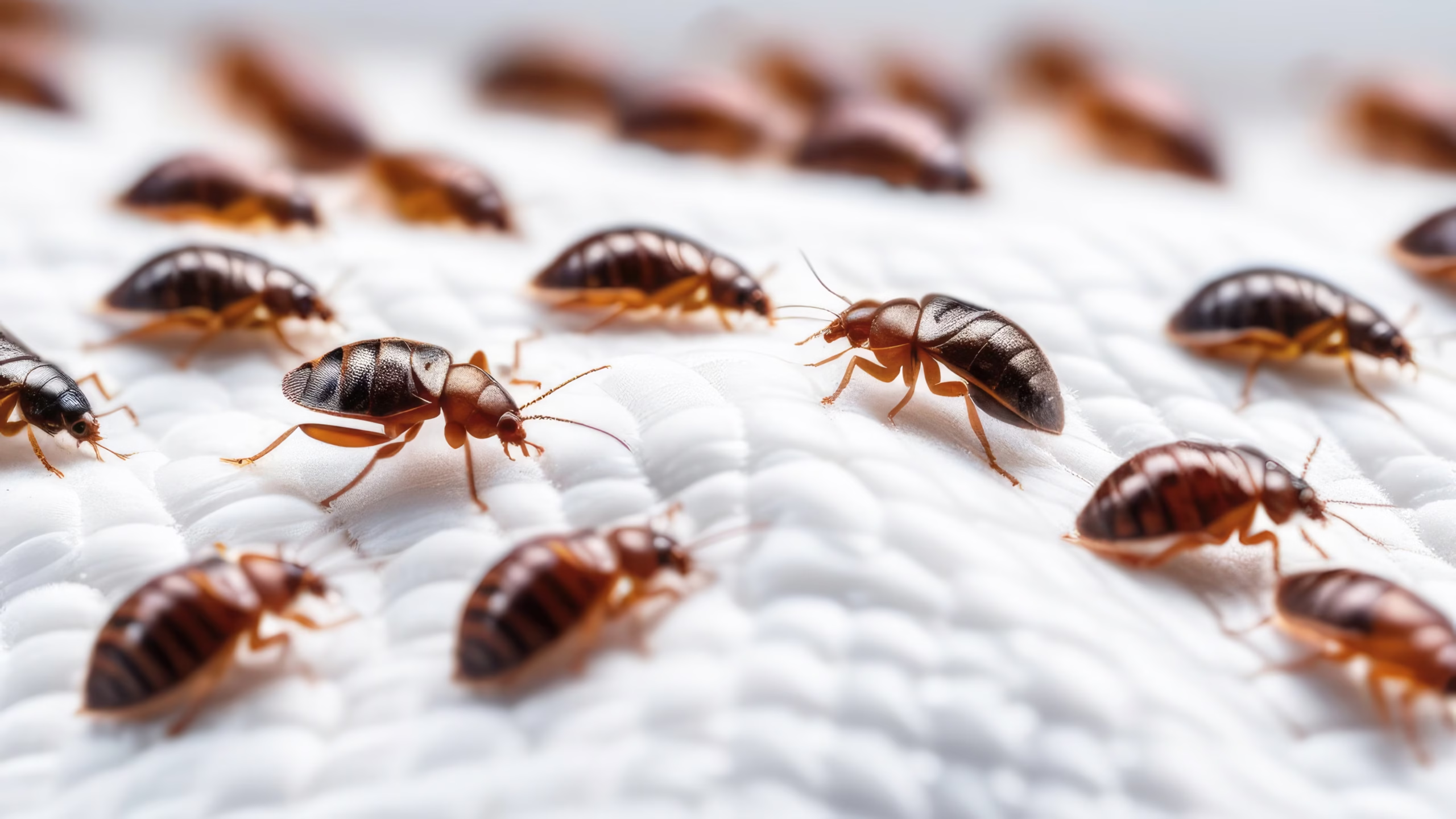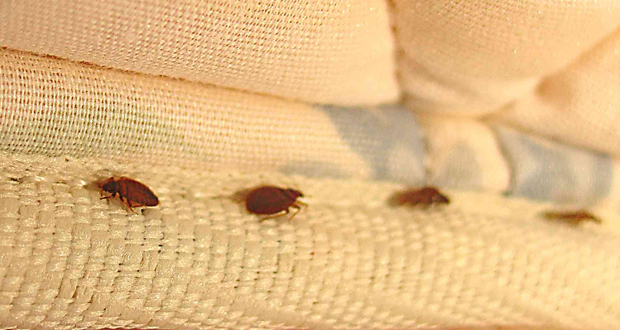Bed Bug Treatments in Florida
Exterminator Services for Clearwater, Clearwater Beach, Largo, and Belleair Beach
Florida’s subtropical climate, characterized by ample warmth and mild winters, attracts vacationers year-round. Unfortunately, these same conditions also favor a wide range of pests—chief among them being bed bugs. These small, blood-feeding insects often stow away in luggage, furniture, or personal belongings, only to establish hidden colonies in bedrooms, living rooms, or commercial lodging if left undetected. In places like Clearwater, Clearwater Beach, Largo, and Belleair Beach, bed bugs can appear quickly, causing itchy bites, sleepless nights, and persistent anxiety. This service page explores how bed bugs thrive in Florida, how to recognize an incipient infestation, and why hiring an experienced bed bug exterminator for comprehensive bed bug treatments remains the most dependable route to restoring a pest-free environment. By reacting promptly to any hint of bed bugs, property owners halt their spread and spare occupants or guests from ongoing discomfort.
Why Bed Bugs Flourish in Florida
- Mild Winters and Year-Round Warmth
States with freezing winters enjoy natural slowdowns of bed bug activity, as cold weather curbs breeding. Florida’s milder winter rarely dips below freezing, allowing bed bugs to remain fully active indoors. Even slight winter cooling seldom disrupts heated or air-conditioned interiors where these insects can feed on unsuspecting hosts every day of the year. - Constant Tourist and Seasonal Traffic
Tourist-friendly areas—like Clearwater Beach or Belleair Beach—see continuous flows of travelers. Bed bugs travel efficiently, hiding within suitcases, clothing seams, or used furniture. A single insect can spawn a growing infestation if it goes unnoticed inside a warm and well-occupied living or commercial space. - High Levels of Indoor Comfort
Many Florida homes or businesses employ air conditioning, making interior environments stable and conducive to bed bug life cycles. Bed bugs only need moderate warmth and periodic blood meals to thrive. Without seasonal dormancy, a small introduction rapidly escalates if unrecognized. - Minimal Seasonal Dormancy
In cooler climates, bed bugs might slow or enter partial dormancy during extended cold months. Florida’s climate spares them such a forced break, encouraging near-constant feeding and reproduction. This continuity means property owners must remain vigilant year-round, not solely in warmer seasons. - Diverse Housing and Lodging
From large rentals catering to vacationers to smaller homes hosting seasonal residents, Florida’s housing variety sees occupant turnover. Unsuspecting owners or tenants may inadvertently bring bed bugs in if they acquire secondhand furniture or store luggage incorrectly. Multi-unit buildings pose an extra risk if bed bugs migrate through shared walls or utility lines.

Evident Signs of Bed Bugs
- Red, Itchy Bites
Bed bugs typically feed after dark, leaving red, itchy bumps on sleepers’ exposed skin—often the arms, legs, or neck. Some individuals show linear bite patterns or clusters. While not all exhibit reactions, frequent unexplained bites upon waking point toward bed bugs as a likely culprit. - Rust-Colored or Dark Specks on Bedding
Small, rust-tinted marks on sheets or pillows can be remnants of a bed bug crushed post-feeding. Black or brownish specks (droppings) often cluster along mattress seams or bed frames. Spotting these near the pillow or in corners of fitted sheets strongly suggests bed bug activity. - Eggs or Shells in Seams
As they mature, bed bugs molt and discard translucent skins. Their eggs, about 1 millimeter long and whitish, might group together in tight crevices. Inspecting mattress edges, couch cushions, or behind headboards with a flashlight can reveal these shells, proving multiple life stages exist. - Musty or Sweet Odor
Heavy infestations might produce a faint, sweetish or musty smell, stemming from bed bug pheromones. Not every case reaches this odor threshold, so rely more on the physical signs like specks, eggs, or live bugs. - Actual Bug Sightings
Adults measure around 5-7 millimeters, flattened, and oval, turning rust-brown if fed. Nymphs are smaller and lighter in color but visible upon close inspection. Pulling back sheets or investigating tight corners at night might reveal them scuttling away from light.
Consequences of Ignoring Bed Bugs
- Exponential Growth
A single female bed bug lays numerous eggs daily. Under Florida’s stable indoor conditions, these eggs hatch swiftly into nymphs that mature and breed if left unaddressed. A minor incursion can swell to dozens or hundreds of bugs in a few months, eventually requiring more time-consuming and costly eradication methods. - Repeated Bites and Sleeplessness
Bed bug bites disrupt sleep, prompting stress, restlessness, or even paranoia before bedtime. Occupants might launder linens constantly, checking each night for black specks or eggs. Resolving bed bugs eliminates these daily anxieties. - Potential for Wider Spread
In multi-unit dwellings, bed bugs can move along shared pipes or cracks to next-door apartments if only one occupant acts. Similarly, short-term rental guests could transport bed bugs from room to room, carrying them further if the core issue remains untreated. - Property Reputation Damage
Hotels, Airbnb hosts, or real estate sellers stand to lose occupant trust if bed bugs are found. Negative reviews or occupant complaints overshadow brand image, hampering future bookings or property value. Swift, discreet professional treatments maintain occupant confidence and comfort.
Why Hire a Bed Bug Exterminator for Treatments
- Thorough Inspection and Identification
A professional bed bug exterminator pinpoints every nook where bed bugs might reside—mattress seams, furniture joints, behind baseboards, within wall outlets. Accurately gauging the infestation’s extent shapes an effective strategy. - All Life Stage Coverage
Bed bug eggs can hatch weeks after any partial solution kills only adult bugs. Professionals integrate multiple methods—like steam, insect growth regulators, chemical sprays, or heat—to annihilate bed bugs in every stage, from egg to adult. - Safe, Targeted Application
Over-the-counter foggers or sprays can scatter bed bugs, pushing them deeper behind walls. Exterminators meticulously apply insecticides or use heat treatments exactly where bed bugs hide, balancing occupant safety with maximum lethality for hidden insects. - Follow-Up Assurance
Because bed bug eggs could remain if coverage is incomplete, scheduling re-checks or employing bed bug interceptors ensures newly emerged bugs meet lethal conditions. If occupant sightings persist, additional spot or heat treatments confirm no stragglers remain.

Exterminator Strategies for Bed Bug Treatments
- Vacuuming and Steam
Vacuuming lifts visible bugs, droppings, or eggs from surfaces. Steam—a chemical-free approach—kills bed bugs in deeper folds or seams instantly. Combined, these steps greatly reduce the population before insecticides are introduced. - Residual Sprays and Dusts
Technicians may apply insecticides along baseboards, bed frames, or cracks, leaving a toxic barrier for bed bugs crossing these treated surfaces. Insect growth regulators hamper nymph development, cutting off the next generation. Careful usage spares residents from excessive chemical contact. - Heat Treatments
In major or multi-room infestations, raising indoor temperatures above about 120°F for several hours kills bed bugs across all stages. The process can infiltrate wall voids, furniture crevices, or electronics simultaneously, often eliminating large colonies in one pass—though occupant re-entry awaits post-cooling. - Mattress and Box Spring Encasements
Sealing bedding in special bed bug–proof covers starves any remaining bugs and denies fresh insects from nesting inside. Checking encasements helps confirm bed bugs can’t re-enter or remain concealed in bedding. - Monitoring Devices
Placing interceptors under bed legs or sticky traps in corners reveals if bed bugs persist post-treatment. Occupants watch for fresh bites or black droppings, contacting the exterminator if signs reappear. Early detection halts re-establishment quickly.
Coverage Areas: Clearwater, Clearwater Beach, Largo, and Belleair Beach
Clearwater: Known for its vibrant downtown and scenic coastal living, Clearwater sees consistent traffic from visitors, part-time residents, and year-round dwellers. Frequent occupant or visitor transitions raise the odds of bed bugs tagging along in luggage or secondhand furniture, emphasizing occupant vigilance plus routine checks.
Clearwater Beach: A top tourist destination featuring numerous rentals, hotels, and resorts. Bed bug issues can surface if one occupant introduces them inadvertently. Swift building-wide or room checks ensure the problem doesn’t expand among rotating guests, preserving brand reputation.
Largo: As a suburban community with varied housing, Largo’s older apartments or multi-unit structures risk shared-wall transmissions if bed bugs remain in just one unaddressed unit. Coordinated occupant responses combined with professional treatments hamper cross-building infestation.
Belleair Beach: Renowned for a quieter coastal atmosphere, Belleair Beach draws seasonal or short-term visitors who might unknowingly bring bed bugs. Thorough cleaning routines plus occupant education hamper stealthy introductions into homes or local rentals.
Why Our Bed Bug Treatments Succeed
- Florida-Focused Approach
Because bed bugs breed nearly any time in Florida’s mild climate, our extermination methods account for year-round vigilance. We integrate occupant collaboration—like laundering, vacuuming, sealing cracks—into steam, chemical, or heat measures, ensuring bed bugs across all stages are targeted. - Strategic, Safe Application
Our exterminator team pinpoints bed bug hotspots, from mattress seams and box springs to behind outlets or baseboards, administering treatments exactly where bugs dwell. This laser focus kills bed bugs while limiting occupant or pet exposure to insecticides. - Long-Term Education
Beyond eliminating the current infestation, we advise owners on preventing future arrivals. Checking secondhand items before bringing them home, storing luggage off the floor after traveling, and regularly vacuuming corners all reduce bed bug infiltration possibilities. - Follow-Up Confirmation
Because bed bug eggs can hatch after initial interventions, scheduling re-checks or equipping bed frames with interceptors ensures new nymphs cannot survive unnoticed. If occupant sightings persist, we refine tactics immediately to maintain bed bug-free conditions.

Next Steps
Spotting small black spots on your sheets, waking up with itchy bites, or suspecting suspicious insects lurking in mattress seams? Contact us to learn more or schedule your service. Our bed bug exterminator solutions in Clearwater, Clearwater Beach, Largo, and Belleair Beach thoroughly eliminate bed bugs—eggs, nymphs, and adults—helping residents and guests regain restful nights. Acting swiftly spares you from the stress of ongoing bites, repeated laundering, or fear that bed bugs might spread to other rooms or neighboring units.
Sustaining a Bed Bug-Free Property
After successful elimination, small, ongoing steps help safeguard against reintroduction:
- Inspect Luggage Post-Travel: Upon returning from trips, check suitcases and clothing for stowaway bugs. Launder items in hot water, vacuum suitcases, and store them away from bedrooms.
- Check Secondhand Goods: Examine used furniture, mattresses, or décor for droppings, eggs, or adult insects before bringing them indoors. If uncertain, isolate or treat these items first.
- Vacuum Frequently: Floors, rugs, upholstery, and corners can harbor straggling bugs or eggs. Dispose of vacuum contents in sealed plastic outside to avoid re-infestation.
- Encasements: Placing mattresses or box springs in bed bug-proof covers denies new bugs a chance to hide inside bedding. Reviewing encasements routinely for droppings or live insects helps confirm your property remains clear.
- Cautious Storage: Keep rarely used linens, blankets, or seasonal attire sealed in plastic bins to deter bed bugs from nesting within. If storing these items near floors, occasional checks hamper any silent buildup.
Combining these preventive habits with consistent occupant awareness drastically lowers the chance of another bed bug outbreak. While Florida’s climate offers near-perfect breeding conditions for bed bugs, your vigilance—enhanced by professional extermination—builds a robust line of defense. Ultimately, southwestern Florida property owners can appreciate the region’s sunny charms without the nightly intrusion of hidden pests lurking in bed seams, ensuring a restful environment for all.
